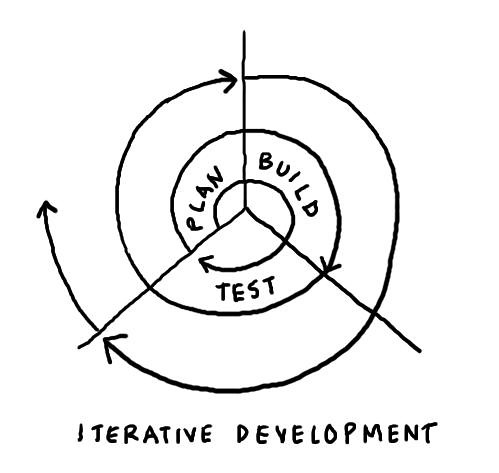Software Development Model
The process of software creation can be a complex and daunting task, involving many different stages and components. There are several models of software created that can be used to guide the process, each with its own strengths and weaknesses. In this article, we will explore some of the most commonly used models of software creation and examine their key characteristics.
1. Waterfall Model:
The Waterfall Model is one of the oldest and most traditional models of software creation. This model is a linear sequential approach to software development, where each stage of the process is completed before moving on to the next one. The stages in the Waterfall Model include planning, design, implementation, testing, and maintenance.
The Waterfall Model is useful when the requirements and objectives of the software are well understood, and changes are not expected. It is also useful for projects where the development team has a well-defined and stable set of tools and technologies. However, it can be inflexible, and changes to the software during the development process can be challenging to implement.
2. Agile Model
The Agile Model is a more flexible approach to software creation, which emphasizes the importance of collaboration and communication between team members. This model is based on iterative and incremental development, with frequent reviews and feedback from stakeholders.
The Agile Model is useful when the requirements and objectives of the software are not fully understood, or when changes are expected. It is also useful for projects where the development team needs to be responsive to changes in the market or the needs of the end users. However, it can be challenging to manage large and complex projects, and it requires a highly skilled and experienced team.
3. Spiral Model
The Spiral Model is a risk-driven model of software creation, which emphasizes the importance of risk management throughout the development process. This model involves a series of iterations, each of which includes four stages: planning, risk analysis, engineering, and evaluation.
The Spiral Model is useful for projects where there is a high level of uncertainty or risk, and where it is important to identify and mitigate potential problems as early as possible. It is also useful for projects where there are multiple stakeholders with different requirements and objectives. However, it can be time-consuming and resource-intensive, and it requires a high level of expertise in risk management.
4. V-Model
The V-Model is a variation of the Waterfall Model, which emphasizes the importance of testing throughout the development process. This model involves a series of stages, each of which has a corresponding testing stage. The stages in the V-Model include requirements, design, implementation, testing, and maintenance.
The V-Model is useful for projects where testing is a critical component of the development process, and where there is a need to ensure that the software meets the required quality standards. It is also useful for projects where the development team needs to be able to trace the requirements and design decisions back to specific tests. However, it can be inflexible, and changes to the software during the development process can be challenging to implement.
In conclusion, the model of software creation that a development team chooses will depend on the specific requirements and objectives of the project. Each model has its own strengths and weaknesses, and it is important to choose the one that is best suited to the project's needs. By selecting the right model and following a well-defined process, development teams can create high-quality software that meets the needs of their stakeholders.
Software Development Model
 Reviewed by Bhavdip hirani
on
March 02, 2023
Rating:
Reviewed by Bhavdip hirani
on
March 02, 2023
Rating:
 Reviewed by Bhavdip hirani
on
March 02, 2023
Rating:
Reviewed by Bhavdip hirani
on
March 02, 2023
Rating:







No comments: